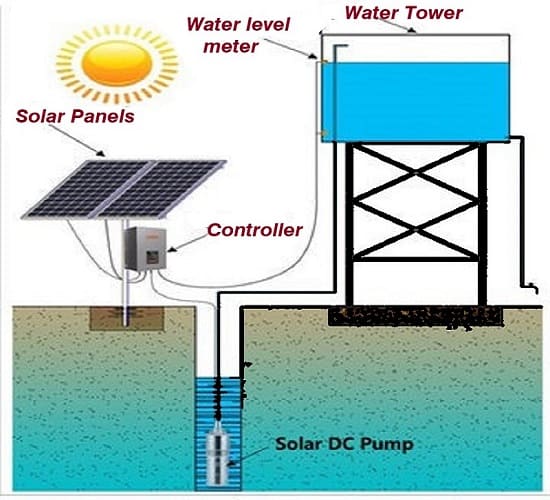- MPPT Overview
Maximum Power Point Tracking (MPPT for short) is a core technology in photovoltaic power generation systems. output maximum power. Under different solar irradiance conditions, the maximum power point is different. When the temperature is different, the maximum power point is also different.
The photovoltaic array is easily disturbed by the surrounding environment (such as floating clouds, buildings, shaded trees, etc.) and the dust on the surface of the panel during use, resulting in a decrease in the output power of the photovoltaic array and a complicated output characteristic curve.
The output characteristic curve has multiple extreme points, which makes the single-peak-based maximum power point tracking algorithm may fail in this case, and the global maximum power point cannot be obtained, which greatly reduces the efficiency of the photovoltaic power generation system.
In order to obtain the maximum power point, the condition must be satisfied that the internal resistance and the external resistance are equal, and the battery component is working at the maximum power point at this moment.
The MPPT system is an electrical system that adjusts the working state of the electrical module, so that the photovoltaic panel can output more electrical energy, and can effectively store the direct current generated by the solar panel in the battery, which can effectively solve the problem that the conventional power grid cannot be covered.
The output power of the photovoltaic cell is related to the working voltage of the MPPT controller, and its output power will have a unique maximum value only when it works at the most suitable voltage.
The sunshine intensity is 1000W/under, U=24V, I=1A; U=30V, I=0.9A; U=36V, I=0.7A; it can be seen that the output power is the largest under the voltage of 30.
- MPPT Principle
To charge the battery, the output voltage of the solar panel must be higher than the current voltage of the battery, if the voltage of the solar panel is lower than the voltage of the battery, the output current will be close to 0.
Therefore, for safety reasons, when the solar panel is manufactured, the peak voltage (Vpp) of the solar panel is about 17V, which is set based on the standard when the ambient temperature is 25°C. When the weather is very hot, the peak voltage Vpp of the solar panel will drop to about 15V, but in cold weather, the peak voltage Vpp of the solar energy can reach 18V.
The traditional solar charge and discharge controller is a bit like a manual gearbox. When the engine speed increases, if the gear of the gearbox is not increased accordingly, it will inevitably affect the speed of the vehicle. But for traditional controllers, the charging parameters are set before leaving the factory, that is to say, the MPPT controller will instantly track the maximum power point in the solar panel to exert the maximum effect of the solar panel.
The higher the voltage, the more power can be output through maximum power tracking, which improves the charging efficiency. In theory, the solar power generation system using MPPT controller will increase the efficiency by 50% compared with the traditional one, but according to our actual test, due to the influence of the surrounding environment and various energy losses, the final efficiency can also be increased by 20%-30% .
In this sense, the MPPT solar charge and discharge controller is bound to eventually replace the traditional solar controller.
- MPPT Function
The main functions of the MPPT controller: detect the DC voltage and output current of the main circuit, calculate the output power of the solar array, and realize the tracking of the maximum power point.
The disturbance resistor R and the MOSFET are connected in series. Under the condition that the output voltage is basically stable, the average current passing through the resistor is changed by changing the duty cycle of the MOSFET, so the disturbance of the current is generated.
At the same time, the output current and voltage of the photovoltaic cell will also change accordingly. By measuring the change of the output power and voltage of the photovoltaic cell before and after the disturbance, the disturbance direction of the next cycle is determined.
When the disturbance direction is correct, the output power of the solar panel increases, and the lower The cycle continues to perturb in the same direction, on the contrary, perturb in the opposite direction. In this way, the perturbation and observation are repeated to make the output of the solar photovoltaic panel reach the maximum power point.
- MPPT Conclusion
MPPT solar controller is solar charge and discharge controller, which is used to control photovoltaic panels to charge batteries and provide load control voltage for voltage sensitive equipment. It is specially designed for the power supply system of communication or monitoring equipment in remote areas. The charge control and load control voltage of the controller are fully adjustable, and can display battery voltage, load voltage, solar array voltage, charging current and load current.




2 Responses
I’m not surе exactly why but this bⅼog is loading very slow for me.
Is anyone eⅼse having this issue or is it a issue on mү
end? I’ll check bacк latеr on and see if the problem still
exists.
Hi Boarsh, thank you for your comment. My name is Felina, not yet other people have feedback for low loading of tihs blog, please could you try again? If still very low to load this blog, please could you let me know? I will ask our technical department to help, thank you. Wish you nice day.